Interactive Visualizations with Plotly have revolutionized the way we tell stories with data. From early static graphs to today’s dynamic, user-driven visuals, data presentation has come a long way—and Plotly is at the forefront of this transformation. It empowers users to turn raw data into compelling, interactive experiences that drive engagement and understanding.
Plotly is a flexible and powerful platform for creating data visualizations that are not only beautiful but also highly functional. Whether you’re analyzing trends, exploring complex datasets, or presenting key insights, Plotly’s tools make it simple for both beginners and professionals to bring clarity and depth to their data.
In this article, you’ll explore how to use Plotly to build interactive charts, graphs, and maps. Step-by-step guidance will help you create visualizations that not only look impressive but also enhance your storytelling. Let’s dive in and unlock the full potential of your data with Plotly.
Key Takeaways
- Plotly simplifies the creation of engaging graphical data presentations.
- Data visualization has evolved from static charts to dynamic maps.
- Plotly’s tools make it easy to explore complex datasets.
- This guide is suitable for both beginners and experts.
- Plotly enhances storytelling by turning data into meaningful insights.
Introduction to Interactive Visualizations
Modern tools have revolutionized the way we interpret and share data. Unlike static charts, dynamic visuals allow users to explore information in depth. This approach not only engages audiences but also helps them uncover hidden insights.
Why Interactive Visualizations Matter
Interactive visuals transform raw numbers into engaging stories. For example, animated charts and dynamic dashboards let users drill down into specific details. This level of engagement fosters better understanding and decision-making.
Over the past year, businesses have increasingly adopted these tools to present complex data. A skilled team can use them to highlight trends, patterns, and outliers effectively. This makes data storytelling more impactful and accessible.
An Overview of This Ultimate Guide
This guide aims to help you master both basic and advanced techniques. You’ll learn how to create visuals that not only look great but also communicate information clearly. From setting up tools to designing user-driven experiences, we’ve got you covered.
Here’s what you’ll discover:
- Fundamentals of dynamic visuals and their advantages over static graphics.
- Real-world examples of how businesses use these tools to drive results.
- Tips for building a team that can create compelling data stories.
By the end, you’ll have the knowledge and skills to turn data into meaningful insights. Let’s dive in and explore the possibilities!
The Evolution of Data Visualization
The journey of data visualization has been a fascinating evolution over centuries. From early maps to modern dashboards, the way we present data has transformed dramatically. This shift has not only improved clarity but also made complex information more accessible.
From Static Charts to Engaging Data Stories
In the beginning, data was presented through static charts and maps. These early tools were simple but effective for their time. Pioneers like William Playfair and Florence Nightingale played a key role in creating readable graphs. Their work laid the foundation for modern techniques.
Today, data visualization has moved beyond static images. Dynamic tools allow users to explore data in depth. This shift has made it easier to uncover hidden insights and tell compelling stories. For businesses, this means better decision-making and clearer communication.
Historical Milestones and Innovative Shifts
Several key milestones have shaped the field of data visualization. The invention of the bar chart in the 18th century was a major breakthrough. Later, the rise of computers brought new possibilities. Interactive elements and real-time updates became standard features.
In the business world, these innovations have been game-changers. Traditional graphs have evolved into dynamic dashboards. These tools provide real-time insights and help teams stay ahead. Historical context continues to influence modern practices, ensuring that lessons from the past shape the future.
For example, early pie charts have transformed into interactive tools that highlight key points. Similarly, static maps are now dynamic platforms for exploring geographic data. These changes show how far we’ve come and hint at what’s next.
Understanding Interactive Visualizations
Engaging your audience with data has never been more dynamic. Unlike traditional static charts, interactive elements allow users to explore information in depth. This approach not only enhances understanding but also makes data storytelling more impactful.
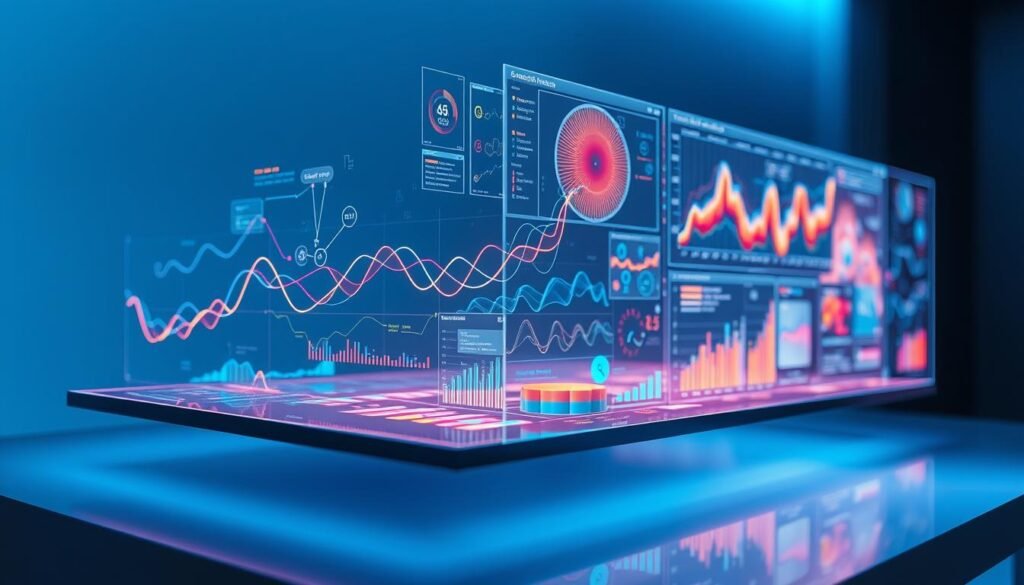
Defining Interactive Elements and Their Functions
Interactive visuals include features like tooltips, click-through actions, and filters. These elements let users focus on specific details, making data exploration more intuitive. For example, hovering over a chart can reveal additional context, while filters allow for customized views.
Here are some key components of interactive visuals:
- Tooltips: Provide extra information when users hover over data points.
- Click-through actions: Enable users to drill down into specific datasets.
- Filters: Allow customization of data views based on user preferences.
Benefits Over Traditional Static Visuals
Interactive visuals offer several advantages over static images. They encourage users to engage with the data, uncovering insights that might otherwise go unnoticed. For instance, a dynamic dashboard can highlight trends and outliers in real-time, making it easier to draw conclusions.
Here’s how interactive visuals stand out:
- Enhanced engagement: Users can explore data at their own pace.
- Deeper analysis: Interactive features reveal hidden patterns and trends.
- Tailored experiences: Visuals can be customized to meet specific audience needs.
“Interactive visuals transform raw data into meaningful stories, making complex information accessible to all.”
By tailoring interactive datum visualizations for different audiences, you can ensure your message resonates effectively. Whether for business analytics or educational purposes, these tools empower users to connect with data in meaningful ways.
Interactive Visualizations in Action
The power of data comes alive when users can interact with it directly. Unlike static charts, dynamic tools allow for deeper exploration and personalized insights. This section dives into the differences between interactive and non-interactive methods and showcases real-world examples of user-driven experiences.
Comparing Interactive and Non-Interactive Methods
Static charts provide a snapshot of data, but they lack the flexibility to explore further. For example, a bar chart might show sales trends, but it won’t let users drill down into specific regions or time periods. On the other hand, interactive tools like dashboards and dynamic maps offer a more engaging experience.
Here’s a quick comparison:
| Feature | Non-Interactive | Interactive |
|---|---|---|
| User Engagement | Limited | High |
| Data Exploration | Surface-level | In-depth |
| Customization | None | Tailored views |
Examples That Showcase User-Driven Experiences
Companies like Pine Cove Camp and The Pudding have leveraged interactive tools to create compelling data stories. For instance, Pine Cove Camp used a dynamic map to show attendance trends across locations. Users could click on specific regions to see detailed insights, making the data more accessible.
Another example is The Pudding’s exploration of music genres. Their interactive chart allowed users to filter by decade, artist, and popularity. This approach not only made the data engaging but also encouraged users to discover patterns on their own.
“Interactive tools transform raw data into meaningful stories, making complex information accessible to all.”
These examples highlight how interactivity encourages deeper exploration and personalized insights. By adopting dynamic tools, businesses can turn complex data into clear, actionable information.
Getting Started with Plotly for Data Storytelling
Plotly’s intuitive design makes it a go-to tool for transforming raw data into compelling stories. Whether you’re a beginner or an experienced user, its rich feature set simplifies the process of creating dynamic charts and maps. This section will guide you through the initial steps of setting up Plotly and building your first charts.
Setting Up Plotly and Required Tools
To get started, you’ll need to install Plotly and its dependencies. Begin by installing Plotly via pip:
pip install plotlyNext, ensure you have Python and Jupyter Notebook installed. These tools are essential for creating and testing your visualizations. Once set up, you’re ready to explore Plotly’s capabilities.
Basic Techniques for Building Your First Charts
Creating your first chart is straightforward. Start by importing Plotly and defining your data. Here’s an example of a simple bar chart:
import plotly.express as px
data = px.data.iris()
fig = px.bar(data, x="species", y="sepal_width")
fig.show()This code generates a bar chart comparing sepal width across different iris species. Experiment with different chart types to find what works best for your data.
Here’s a quick comparison of Plotly’s key features:
| Feature | Description |
|---|---|
| Dynamic Charts | Allows users to interact with data points for deeper insights. |
| Customization | Offers extensive options to tailor visuals to your needs. |
| Integration | Works seamlessly with Python, R, and JavaScript. |
“Plotly’s flexibility and ease of use make it a powerful tool for data storytelling.”
By mastering these basics, you’ll be well on your way to creating engaging visualizations that resonate with your audience. Stay tuned for advanced techniques in the next section!
Advanced Techniques with Plotly
Unlocking the full potential of data requires more than just static charts. With Plotly, you can take your data storytelling to the next level using advanced techniques. These methods not only make your visuals more engaging but also provide deeper insights for your audience.
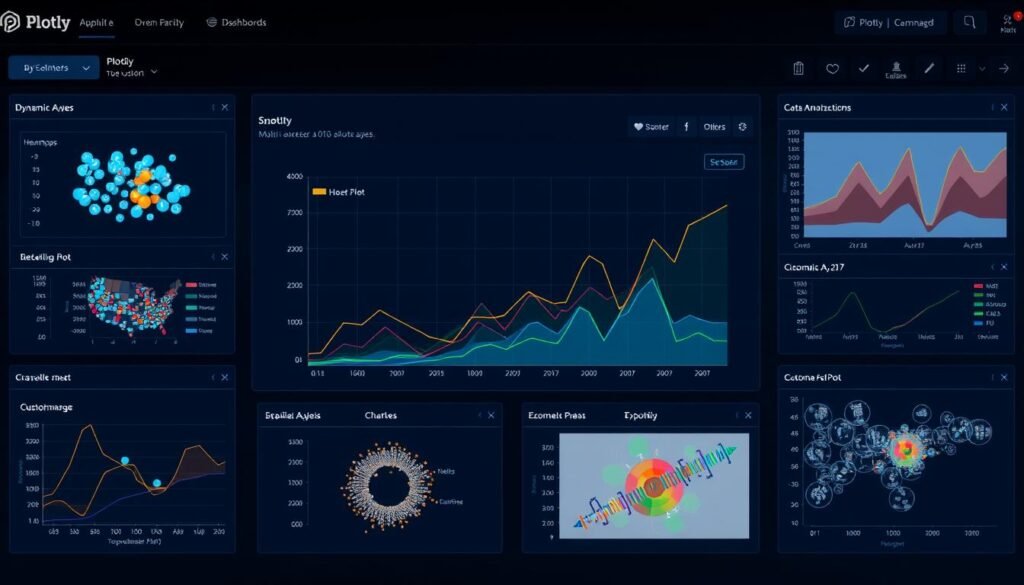
Implementing Animated Charts and Number Counters
Animated charts bring your data to life by showing changes over time. For example, a bar chart that transitions between years can highlight trends effectively. Number counters, on the other hand, add a dynamic touch by incrementing values in real-time.
Here’s how to create an animated chart in Plotly:
import plotly.express as px
df = px.data.gapminder()
fig = px.bar(df, x="continent", y="pop", animation_frame="year")
fig.show()This code generates a bar chart that animates population changes across continents over time. Such visuals make complex data easier to understand and more engaging.
Utilizing Scroll-Triggered and 3D Elements
Scroll-triggered effects add interactivity to your dashboards. As users scroll, new data points or charts can appear, creating a seamless experience. Similarly, 3D elements provide a multi-dimensional view of data, making it easier to spot patterns.
For instance, a 3D scatter plot can visualize relationships between three variables. Here’s a simple example:
import plotly.express as px
df = px.data.iris()
fig = px.scatter_3d(df, x="sepal_length", y="sepal_width", z="petal_length")
fig.show()These techniques not only enhance visual appeal but also improve data comprehension.
Enhancing User Engagement with Interactive Buttons
Interactive buttons allow users to customize their data views. For example, a button can filter data by region or time period, providing tailored insights. This level of control makes the experience more engaging and user-friendly.
Here’s how to add a button to your Plotly chart:
import plotly.graph_objects as go
fig = go.Figure()
fig.add_trace(go.Scatter(x=[1, 2, 3], y=[4, 5, 6]))
fig.update_layout(updatemenus=[dict(type="buttons", buttons=[dict(label="Play", method="animate")])])
fig.show()By integrating these features, you can create visuals that resonate with your audience and drive meaningful analytics.
“Advanced techniques like animations and interactive buttons transform data into compelling stories.”
These methods ensure your data presentations are not only informative but also memorable.
Creative Use Cases and Real-World Examples
Real-world applications of data tools are transforming industries and decision-making processes. From business analytics to data journalism, these tools are helping organizations uncover trends and make informed choices. Let’s explore some creative examples that highlight the power of dynamic data presentations.
Case Study: Interactive Visualization in Business Analytics
One compelling case comes from a global retail company that used dynamic dashboards to analyze sales data. By integrating real-time updates, they identified seasonal trends and optimized inventory management. This approach not only improved efficiency but also enhanced customer satisfaction.
Another example is a financial institution that leveraged interactive tools to track market changes. Their dashboards allowed analysts to drill down into specific datum points, revealing actionable insights. This level of detail helped them stay ahead in a competitive market.
Exploring Examples from Data Journalism and Mapping
Data journalism has also embraced dynamic tools to tell compelling stories. For instance, the Human Rights House Foundation used interactive maps to highlight human rights violations across different regions. This approach made complex data accessible and engaging for a global audience.
Similarly, the World Wildlife Fund created an interactive platform to track endangered species. Users could explore data by city or region, gaining a deeper understanding of conservation efforts. These examples show how dynamic visuals can bring data to life and drive meaningful action.
“Dynamic data tools transform raw numbers into stories that resonate with audiences and drive change.”
By adopting these strategies, organizations can create visuals that not only inform but also inspire. Whether in business, journalism, or mapping, the possibilities are endless. For more insights on building effective interactive dashboards, explore our detailed guide.
Best Practices for Designing Engaging Visualizations
Designing effective data presentations requires a balance of clarity and creativity. A well-crafted visualization not only communicates information but also tells a compelling story. By focusing on simplicity and user experience, you can create visuals that resonate with your audience.
To achieve this, it’s essential to understand your audience. A person viewing a business report may have different needs than someone exploring a scientific dataset. Tailoring your design to their expectations ensures your message is clear and impactful.
Simplifying Complex Data for Clear Communication
Complex datasets can overwhelm users if not presented effectively. Start by breaking down information into smaller, digestible chunks. Use charts and graphs to highlight key elements and avoid cluttering your visuals with unnecessary details.
For example, instead of showing every data point, focus on trends or patterns. This approach saves time and helps users grasp the main idea quickly. Remember, the goal is to make the data accessible, not to showcase every detail.
Integrating Aesthetic and Functional UI Elements
Aesthetic design enhances the overall experience, but functionality is equally important. Use colors and fonts that align with your brand while ensuring readability. Interactive features like filters and tooltips can add depth without complicating the interface.
Balance is key. A visually appealing design should not compromise usability. Test your visuals with real users to ensure they meet both aesthetic and functional goals. This feedback loop helps refine your work and create a seamless experience.
“Great design is about making complex data simple and beautiful, ensuring it speaks to every person who interacts with it.”
By following these best practices, you can create data presentations that are both engaging and easy to understand. Whether for a business report or a public story, these techniques will help your visuals stand out.
Conclusion
The way we present and interpret data has undergone a significant transformation, thanks to modern tools. Plotly has emerged as a powerful platform for creating engaging and insightful data stories. From static charts to dynamic dashboards, the evolution of data visualization has made complex information more accessible and actionable.
Using tools like heat maps and 3D elements, you can bring your data to life. These features not only enhance visual appeal but also provide deeper insights for marketing and analysis. By experimenting with animated objects and scroll-triggered effects, you can create visuals that resonate with your audience.
To design effective data presentations, focus on simplicity and user experience. Tailor your visuals to meet the needs of your audience, ensuring clarity and impact. Whether you’re exploring global trends or drilling down into specific datasets, the right tools can make all the difference.
Ready to take your data storytelling to the next level? Dive into advanced techniques and explore the latest trends in modern data visualization. Start experimenting today and unlock the full potential of your data.




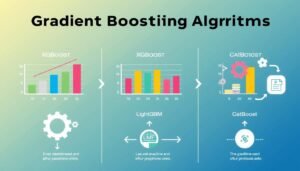

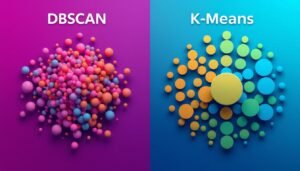


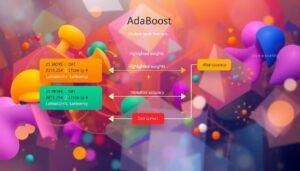





1 thought on “How to Create Interactive Visualizations with Plotly”
The next time I read a blog, I hope that it doesnt disappoint me as much as this one. I mean, I know it was my choice to read, but I actually thought youd have something interesting to say. All I hear is a bunch of whining about something that you could fix if you werent too busy looking for attention.